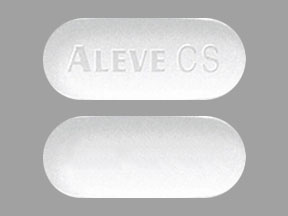Aleve-D Sinus & Cold Interactions
There are 642 drugs known to interact with Aleve-D Sinus & Cold (naproxen/pseudoephedrine), along with 17 disease interactions, and 5 alcohol/food interactions. Of the total drug interactions, 118 are major, 493 are moderate, and 31 are minor.
- View all 642 medications that may interact with Aleve-D Sinus & Cold
- View Aleve-D Sinus & Cold alcohol/food interactions (5)
- View Aleve-D Sinus & Cold disease interactions (17)
Most frequently checked interactions
View interaction reports for Aleve-D Sinus & Cold (naproxen / pseudoephedrine) and the medicines listed below.
- Adderall (amphetamine / dextroamphetamine)
- Advil (ibuprofen)
- albuterol
- Aleve (naproxen)
- alprazolam
- amoxicillin
- Benadryl (diphenhydramine)
- bupropion
- cetirizine
- Claritin (loratadine)
- Cymbalta (duloxetine)
- Flexeril (cyclobenzaprine)
- Flonase (fluticasone nasal)
- hydroxyzine
- ibuprofen
- levothyroxine
- lisinopril
- melatonin
- meloxicam
- metformin
- metoprolol
- Mucinex (guaifenesin)
- omeprazole
- oxycodone
- prednisone
- Tylenol (acetaminophen)
- Vitamin B12 (cyanocobalamin)
- Vitamin C (ascorbic acid)
- Vitamin D3 (cholecalciferol)
- Zyrtec (cetirizine)
Aleve-D Sinus & Cold alcohol/food interactions
There are 5 alcohol/food interactions with Aleve-D Sinus & Cold (naproxen / pseudoephedrine).
Aleve-D Sinus & Cold disease interactions
There are 17 disease interactions with Aleve-D Sinus & Cold (naproxen / pseudoephedrine) which include:
- asthma
- fluid retention
- GI toxicity
- rash
- renal toxicities
- thrombosis
- cardiovascular disease
- sodium
- anemia
- hepatotoxicity
- hyperkalemia
- platelet aggregation inhibition
- GI narrowing
- PKU
- BPH
- diabetes
- glaucoma
More about Aleve-D Sinus & Cold (naproxen / pseudoephedrine)
- Aleve-D Sinus & Cold consumer information
- Compare alternatives
- Reviews (3)
- Drug images
- Side effects
- Dosage information
- During pregnancy
- Drug class: upper respiratory combinations
Related treatment guides
Drug Interaction Classification
| Highly clinically significant. Avoid combinations; the risk of the interaction outweighs the benefit. | |
| Moderately clinically significant. Usually avoid combinations; use it only under special circumstances. | |
| Minimally clinically significant. Minimize risk; assess risk and consider an alternative drug, take steps to circumvent the interaction risk and/or institute a monitoring plan. | |
| No interaction information available. |
See also:
Further information
Always consult your healthcare provider to ensure the information displayed on this page applies to your personal circumstances.


